-
 Bitcoin
Bitcoin $119800
1.38% -
 Ethereum
Ethereum $3873
3.25% -
 XRP
XRP $3.247
1.85% -
 Tether USDt
Tether USDt $1.001
0.02% -
 BNB
BNB $840.4
5.94% -
 Solana
Solana $190.0
2.55% -
 USDC
USDC $1.000
0.03% -
 Dogecoin
Dogecoin $0.2433
2.69% -
 TRON
TRON $0.3197
-0.05% -
 Cardano
Cardano $0.8367
1.39% -
 Sui
Sui $4.327
3.11% -
 Hyperliquid
Hyperliquid $44.00
0.31% -
 Stellar
Stellar $0.4461
1.76% -
 Chainlink
Chainlink $19.25
4.61% -
 Hedera
Hedera $0.2941
3.90% -
 Bitcoin Cash
Bitcoin Cash $598.4
6.89% -
 Avalanche
Avalanche $26.19
4.67% -
 Litecoin
Litecoin $115.1
0.50% -
 Shiba Inu
Shiba Inu $0.00001427
1.55% -
 Toncoin
Toncoin $3.379
2.01% -
 UNUS SED LEO
UNUS SED LEO $8.966
-0.16% -
 Ethena USDe
Ethena USDe $1.001
0.02% -
 Uniswap
Uniswap $11.04
4.16% -
 Polkadot
Polkadot $4.239
2.00% -
 Monero
Monero $324.6
0.36% -
 Bitget Token
Bitget Token $4.672
2.46% -
 Pepe
Pepe $0.00001294
2.69% -
 Dai
Dai $0.0000
0.01% -
 Cronos
Cronos $0.1443
2.71% -
 Aave
Aave $302.9
1.98%
Is there a recommended reward mechanism for the mining income of cloud computing power mining platforms?
Cloud computing power mining platforms lack a single best reward mechanism; the optimal choice depends on platform goals (growth vs. stability), target audience, and security considerations. A hybrid approach, combining several methods, may be most effective.
Mar 17, 2025 at 10:54 pm
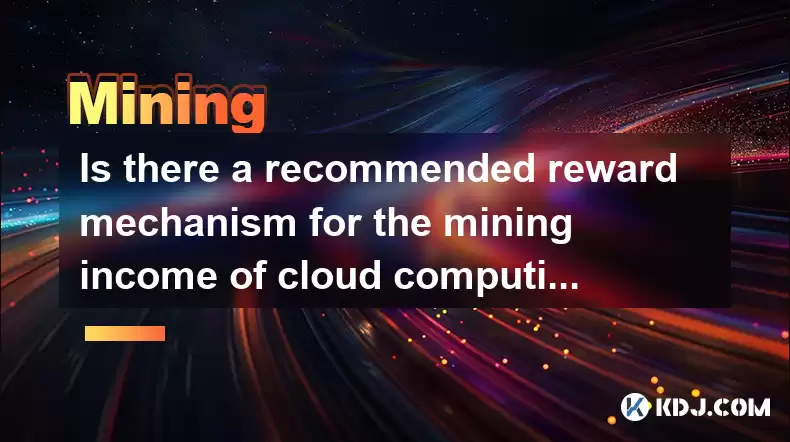
Key Points:
- Several reward mechanisms exist for cloud computing power mining platforms, each with advantages and disadvantages.
- Choosing the right mechanism depends on the platform's goals (e.g., attracting miners, maintaining stability, maximizing profits).
- Transparency and fairness are crucial for building trust and attracting users.
- Security and protection against manipulation are paramount considerations.
- A hybrid approach combining multiple mechanisms might offer the best results.
Is There a Recommended Reward Mechanism for the Mining Income of Cloud Computing Power Mining Platforms?
The question of optimal reward mechanisms for cloud computing power mining platforms is complex, lacking a single "best" solution. The ideal approach depends on various factors, including the platform's size, target audience, and overall business objectives. Several models exist, each presenting unique benefits and drawbacks.
One common approach is a proportional reward system. Miners receive a percentage of the total mining income directly proportional to their invested computing power. This is straightforward and easily understood, promoting fairness. However, it may not incentivize long-term commitment or encourage miners to invest in higher-performance hardware.
Another model involves a tiered reward system. This offers varying reward percentages based on the amount of computing power committed or the duration of the contract. This can incentivize larger investments and longer-term commitments, but it can also create a less equitable environment for smaller miners.
A bonus-based reward system supplements base rewards with bonuses for achieving specific milestones, such as maintaining consistent uptime or referring new miners. This can enhance engagement and encourage positive behaviors, but it requires careful design to prevent manipulation and ensure fairness.
A staking reward system integrates the concept of staking into the mining process. Miners can stake their tokens to receive additional rewards, providing an extra incentive to hold and support the platform's native token. This boosts token value and encourages long-term participation. However, it might increase the barrier to entry for new users.
The implementation of a dynamic reward system allows for adjustments based on market conditions and platform performance. This adaptability can help maintain profitability and stability, but it requires careful monitoring and potentially complex algorithms.
Furthermore, some platforms incorporate a referral program, rewarding existing miners for attracting new users. This boosts growth, but needs clear guidelines to prevent abuse and maintain a balanced ecosystem. Lastly, the use of a lottery system, where a portion of the mining profits is distributed through random draws, can add an element of excitement and engagement, but might not be the most equitable or predictable.
Transparency and Security:
Regardless of the chosen mechanism, transparency is vital. Miners need clear visibility into how rewards are calculated and distributed. This involves regular reporting and auditable processes. Security measures are also essential to protect against manipulation and ensure the integrity of the reward system. This includes robust security protocols and measures to prevent fraud or double-spending.
Factors Influencing the Choice:
The optimal reward mechanism is heavily influenced by the platform's objectives. A platform focused on rapid growth might prioritize a bonus-based system to attract new miners, while one focused on stability might prefer a proportional system. The platform's technological capabilities and the overall market conditions also play a significant role.
The complexity of the chosen mechanism also needs careful consideration. A overly complex system can deter potential miners, while a too simplistic system might not adequately incentivize participation.
A hybrid approach, combining elements of different reward mechanisms, might be the most effective. For instance, a platform could use a proportional reward system as the base, supplementing it with bonuses for uptime and referrals. This would offer a balance between fairness, incentives, and engagement.
Common Questions:
Q: What is the fairest reward mechanism?
A: A purely proportional reward system, where income is distributed strictly based on contributed computing power, is often considered the fairest. However, it might not be the most effective in incentivizing growth or long-term commitment.
Q: How can I protect against manipulation in a reward system?
A: Implement robust security measures, use transparent algorithms, and regularly audit the system for irregularities. A decentralized and verifiable system is crucial.
Q: What are the risks associated with complex reward systems?
A: Complex systems can be harder to understand and manage, potentially leading to confusion, errors, and even opportunities for manipulation. They may also deter less technically savvy users.
Q: How do I choose the right reward mechanism for my platform?
A: Consider your platform's goals, target audience, technical capabilities, and the prevailing market conditions. Analyze the strengths and weaknesses of each mechanism and potentially combine elements for a tailored approach.
Q: How often should rewards be distributed?
A: The frequency depends on the platform's design and the chosen mechanism. Daily or weekly distributions are common, offering a balance between timely payouts and efficient processing.
Disclaimer:info@kdj.com
The information provided is not trading advice. kdj.com does not assume any responsibility for any investments made based on the information provided in this article. Cryptocurrencies are highly volatile and it is highly recommended that you invest with caution after thorough research!
If you believe that the content used on this website infringes your copyright, please contact us immediately (info@kdj.com) and we will delete it promptly.
- Bitcoin's Potential Final Rally: Decoding Historical Data and Future Projections
- 2025-07-28 06:30:11
- BlockDAG, XRP, and Utility-Driven Growth: A New Era for Crypto?
- 2025-07-28 06:30:11
- Token Unlocks and Altcoin Mania: A Wild Week Ahead!
- 2025-07-28 04:30:12
- Pi Network: Price Prediction, New Buy Feature, and the Road Ahead
- 2025-07-28 04:50:11
- Hayden Davis's LIBRA Token: From Investment Promise to Memecoin Mayhem
- 2025-07-28 04:30:12
- AI Tokens on CoinMarketCap: The New Millionaire Maker?
- 2025-07-28 04:35:18
Related knowledge
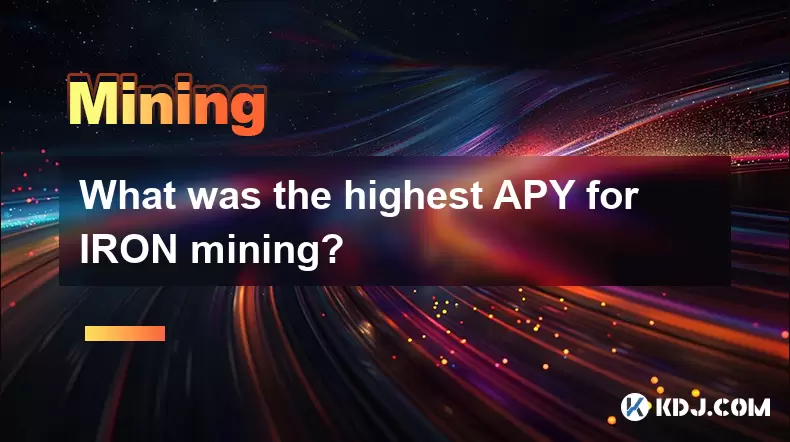
What was the highest APY for IRON mining?
Jul 23,2025 at 05:14am
Understanding IRON Token and Its Mining MechanismThe IRON token is a stablecoin that operates within the Iron Finance ecosystem, primarily on blockcha...

What is impermanent loss in IRON pools?
Jul 23,2025 at 09:00am
Understanding Impermanent Loss in the Context of IRON PoolsImpermanent loss is a phenomenon that affects liquidity providers in decentralized finance ...
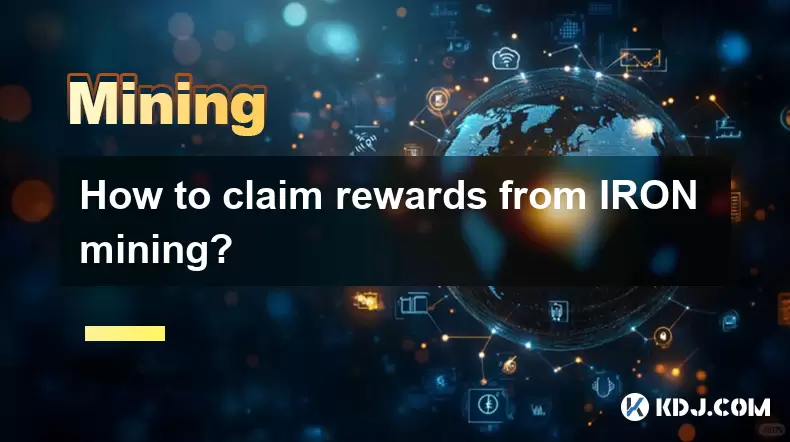
How to claim rewards from IRON mining?
Jul 23,2025 at 02:21pm
Understanding IRON Mining and Reward MechanismsIRON Finance operated as a decentralized finance (DeFi) protocol on the Polygon and Binance Smart Chain...
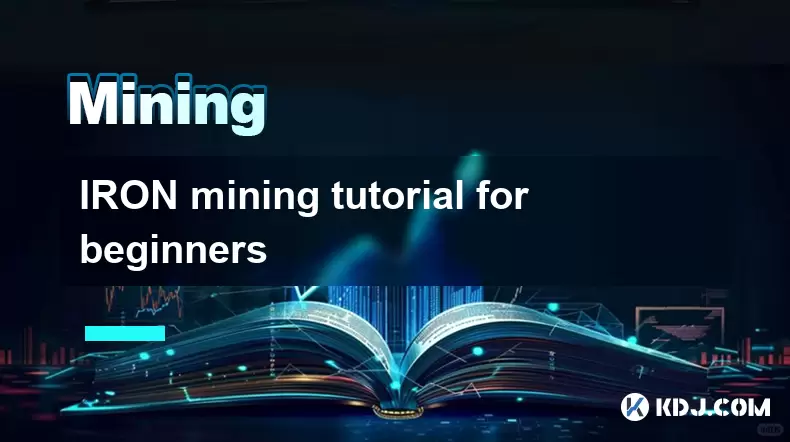
IRON mining tutorial for beginners
Jul 27,2025 at 12:01am
What Is IRON and How Does It Work in the Cryptocurrency Ecosystem?IRON is a cryptocurrency token that operates on the Binance Smart Chain (BSC) and is...
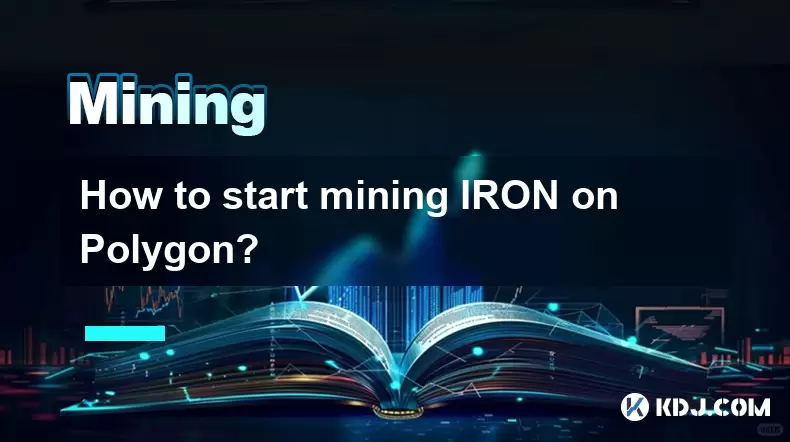
How to start mining IRON on Polygon?
Jul 23,2025 at 08:00pm
Understanding IRON and Its Role on PolygonIRON is a decentralized, algorithmic stablecoin designed to maintain a 1:1 peg with the US dollar. It operat...
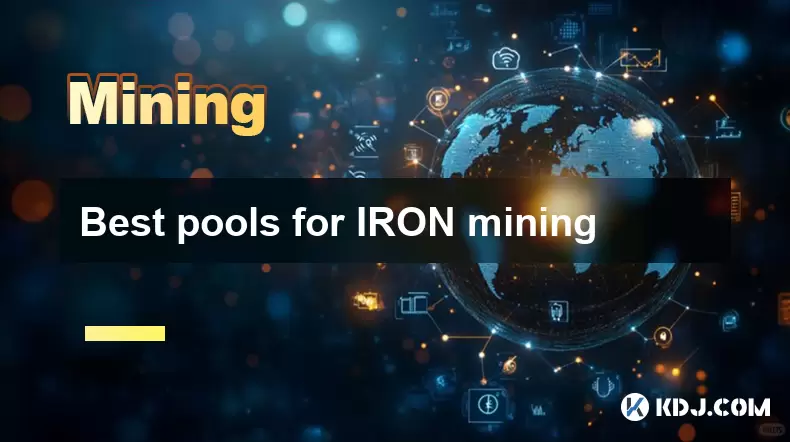
Best pools for IRON mining
Jul 26,2025 at 03:56am
Understanding IRON Mining and Its Unique MechanismIRON (Iron Finance) was a decentralized finance (DeFi) project that aimed to create a multi-chain al...

What was the highest APY for IRON mining?
Jul 23,2025 at 05:14am
Understanding IRON Token and Its Mining MechanismThe IRON token is a stablecoin that operates within the Iron Finance ecosystem, primarily on blockcha...

What is impermanent loss in IRON pools?
Jul 23,2025 at 09:00am
Understanding Impermanent Loss in the Context of IRON PoolsImpermanent loss is a phenomenon that affects liquidity providers in decentralized finance ...

How to claim rewards from IRON mining?
Jul 23,2025 at 02:21pm
Understanding IRON Mining and Reward MechanismsIRON Finance operated as a decentralized finance (DeFi) protocol on the Polygon and Binance Smart Chain...

IRON mining tutorial for beginners
Jul 27,2025 at 12:01am
What Is IRON and How Does It Work in the Cryptocurrency Ecosystem?IRON is a cryptocurrency token that operates on the Binance Smart Chain (BSC) and is...

How to start mining IRON on Polygon?
Jul 23,2025 at 08:00pm
Understanding IRON and Its Role on PolygonIRON is a decentralized, algorithmic stablecoin designed to maintain a 1:1 peg with the US dollar. It operat...

Best pools for IRON mining
Jul 26,2025 at 03:56am
Understanding IRON Mining and Its Unique MechanismIRON (Iron Finance) was a decentralized finance (DeFi) project that aimed to create a multi-chain al...
See all articles

























































































